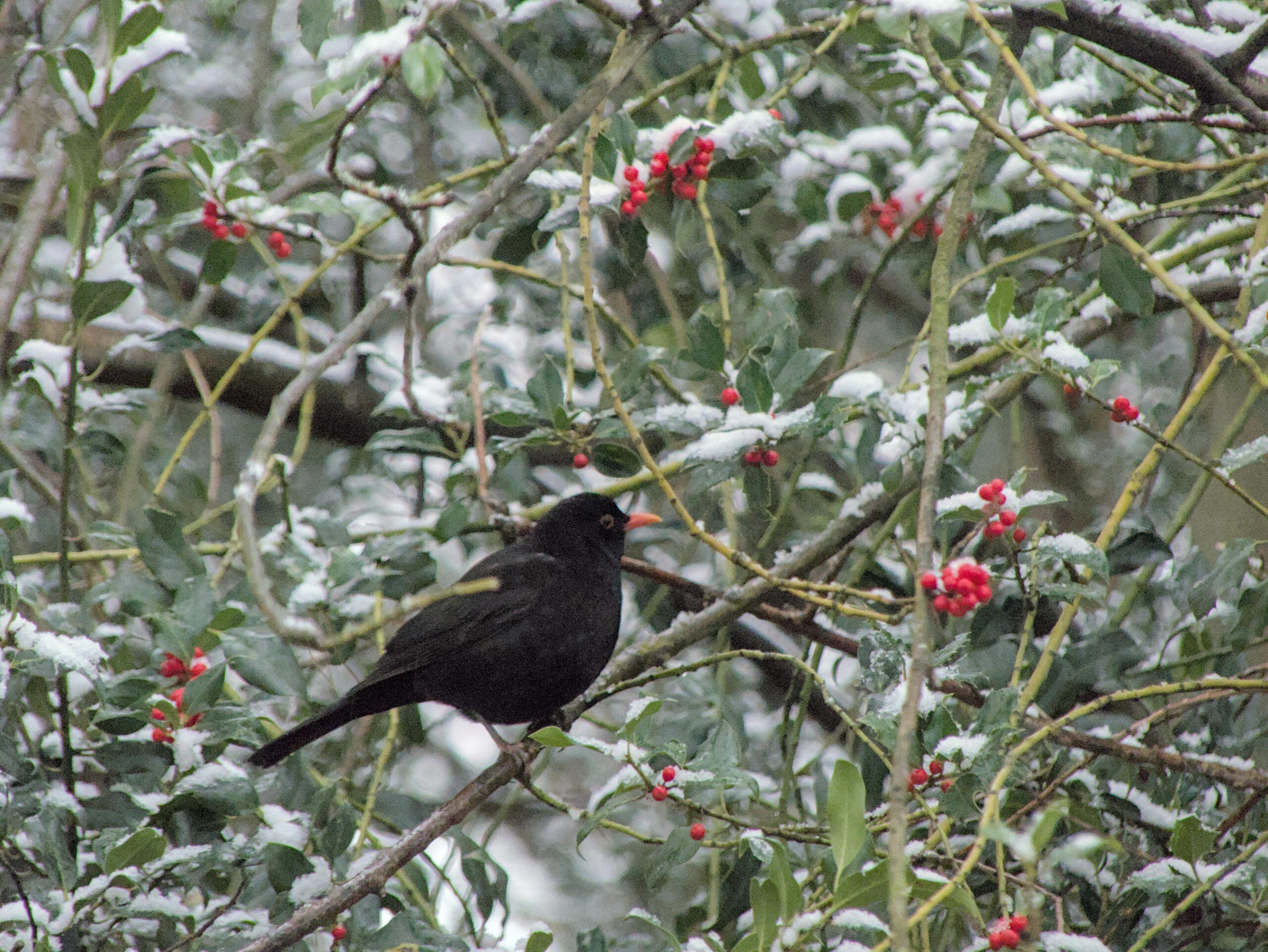
Did you know... how easy it is to help animals in winter?
January 16, 2025
Winter is a particularly challenging time for animals. Cold, snow, and a lack of food push many wild animals to their limits. But with a little attention and commitment, we can help improve the survival chances of our local wildlife. We’ve put together a few tips on how you can help animals in winter – whether through proper feeding, providing shelter, or making small changes in your own garden.

1. Set up feeding stations for birds
For many birds, finding food in winter becomes a real challenge, especially when snow and ice cover the landscape (which, admittedly, is rather rare in Aachen). A feeding station in your own garden or on the balcony can help the animals and also offers the opportunity to observe them up close.
Different bird species prefer different types of food. Seed-eaters like finches and sparrows love sunflower seeds, while blackbirds and robins prefer soft fruits and oats. Mixed food is ideal for attracting a variety of species. Be sure to use unsalted and untreated products. Ready-made food mixes from the supermarket are also suitable.
Use special feeders that are protected from moisture and help maintain hygiene. This reduces the risk of spreading diseases. These can be purchased inexpensively, or you can create a simple DIY feeder using a plastic bottle.
Even in winter, birds need water. Provide a bowl of fresh water and replace it regularly.
2. Protect insects
Insects play a crucial role in our ecosystem. They pollinate plants, serve as a food source for other animals, and help decompose organic material. Fortunately, you can take simple steps to help insects like bees, butterflies, ladybugs, and beetles get through the winter safely.
Leave leaves in a quiet corner. Ladybugs, spiders, and many other insects use the layers as shelter.
Stack old branches or logs. Beetles and their larvae will find a safe winter refuge in them.
Build small stone piles. Insects find shelter between the gaps of stones and wall remnants.
Insect hotels are also ideal accommodations for wild bees, beetles, and other species. You can buy them at a hardware store or make your own from wood, bamboo tubes, straw, and bricks. Place the hotel in a dry, sunny spot, preferably sheltered from wind and rain. Check the insect hotel regularly and clean it gently after winter to avoid pests and mold.
3. Be mindful in the forest and while hiking
A walk or hike in the forest is a wonderful way to enjoy nature. At the same time, it is important to be considerate of wildlife and contribute to their protection wherever possible. Animals in the forest face particular challenges, especially in winter when food is scarce and energy is vital for survival.
Stay on the hiking trails. Marked hiking trails are designed to leave sufficient retreat spaces for animals. Leaving the trails can startle animals and force them to waste valuable energy.
Be mindful of winter quarters. Especially in the cold season, you should not disturb piles of leaves or branches, as these serve as shelters for animals like hedgehogs or amphibians.
Free-roaming dogs can startle or even injure wildlife. Always keep your dog on a leash in the forest, especially in protected areas or during the breeding and birthing season (spring). Some bird species nest on the ground. An off-leash dog can threaten the nest without you noticing.
Do you have an interesting topic you'd like to report on? Whether you're a professional or a beginner – we're always happy to welcome new people who want to share their exciting topics with us.
Here you can access our event calendar. Sign up directly via 'Anni'!
Copyright 2024 - AStA FH Aachen